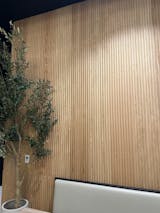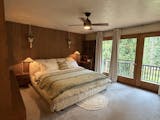The Ultimate Guide on How to Eliminate Echo in a Room

Echoes in the room can disrupt conversations, ruin home theater experiences, and lower audio quality, especially in spaces with hard surfaces.
Learning how to eliminate echo in a room involves understanding that sound waves bounce off surfaces like walls and hard floors, creating unwanted reverberation. Fortunately, extensive renovations aren't needed to fix this issue.
Simple adjustments like adding rugs, cushions, and window curtains can absorb sound, while more advanced solutions, such as acoustic wall panels, provide effective soundproofing. These echo-reducing panels absorb and diffuse sound waves, significantly reducing overall echo.
This guide covers both simple and advanced methods to help create a comfortable, acoustically balanced room. Let’s explore your options.
1. Start with Soft Furnishings
One of the easiest ways to reduce echo in a room is by adding soft furnishings. Hard surfaces like walls, floors, and ceilings reflect sound waves, causing them to bounce around the room and create an echo. Soft furnishings absorb these sound waves, minimizing the echo effect.
Rugs and Carpets
Adding a large rug or carpet to your room is one of the quickest and most effective ways on how to eliminate echo in a room. Rugs help by absorbing sound waves, especially in rooms with hardwood or tile floors. The thicker the rug, the better it will absorb sound. Consider using a rug pad underneath for added thickness and sound absorption.
Upholstered Furniture
Soft, upholstered furniture like sofas and chairs can also help reduce echo. The fabric and padding of upholstered furniture absorb sound waves rather than reflecting them, which reduces echo. If you have furniture, add extra cushions or pillows to increase sound absorption.
Pillows and Cushions
Throw pillows and cushions are not only decorative but also functional for sound absorption. Place them on sofas, chairs, or even the floor to add more soft surfaces to your space. More cushions lead to better sound absorption.
2. Incorporate Curtains and Drapes
Another simple solution to reduce echo is to hang heavy curtains or drapes. Fabric window treatments help dampen sound waves that bounce off glass surfaces.
The thicker and heavier the material, the more effective it will be at absorbing sound. Blackout curtains are particularly good for this purpose because they are usually made of dense fabric.
The photo above shows thin, sheer drapes, which are beautiful and let in nice natural light. These may not be as effective at dampening sound.
They will make a difference, but they won't be the most sound-dampening. You should opt for heavier drapes if you really want to reduce echo significantly.
3. Use Bookshelves and Wall Decor
Strategically placing bookshelves and other wall decor can also help break up sound waves and reduce echo.
A filled bookshelf acts as an irregular surface that diffuses sound waves rather than allowing them to bounce back and forth. Try to arrange your bookshelves so that they are unevenly filled, as this will help scatter sound waves more effectively.
4. Advanced Techniques: Acoustic Wall Panels and Treatments
Once you’ve covered the basics, you might find that you still need more sound absorption, especially in rooms where sound quality is crucial, such as your home theater, recording studios, or home office. This is where advanced acoustic treatments come into play.
Acoustic Panels to Reduce Echo
Acoustic wall panels are specifically designed to absorb sound waves and reduce echo. They can be mounted on walls or ceilings, and come in a variety of materials, including foam squares, fabric-wrapped panels, and wood.
Our acoustic wall panels are a versatile choice because they not only improve sound quality but also enhance the aesthetic appeal of your room. Made from high-quality materials, they effectively absorb mid to high-frequency sound waves, providing a significant reduction in echo.
5. Consider Ceiling Solutions
7. Rearrange Your Furniture
Believe it or not, the way you arrange your furniture can also impact the level of echo in your room. Try to place larger pieces of furniture along walls or corners where sound is likely to reflect.
Breaking up open spaces with furniture is one of the best ways on how to eliminate echo in a room. They help to disrupt the path of sound waves, reducing the echo effect. Additionally, avoid placing furniture in a way that creates a direct path for sound to bounce back and forth across the room.
8. Utilize Plants and Other Decorative Items
How to Eliminate Echo in a Room
Eliminating echo in a room doesn't have to be a complicated process. Start with simple and affordable changes like adding rugs, soft furniture, and curtains. If you're looking for how to eliminate echo in a room more effectively, consider advanced options like acoustic wall panels or sound diffusers.
These can provide significant sound absorption and help create a more comfortable space. Combining these strategies can effectively reduce echo, so find the right balance of materials and placements that work best for your room.












































Leave a comment